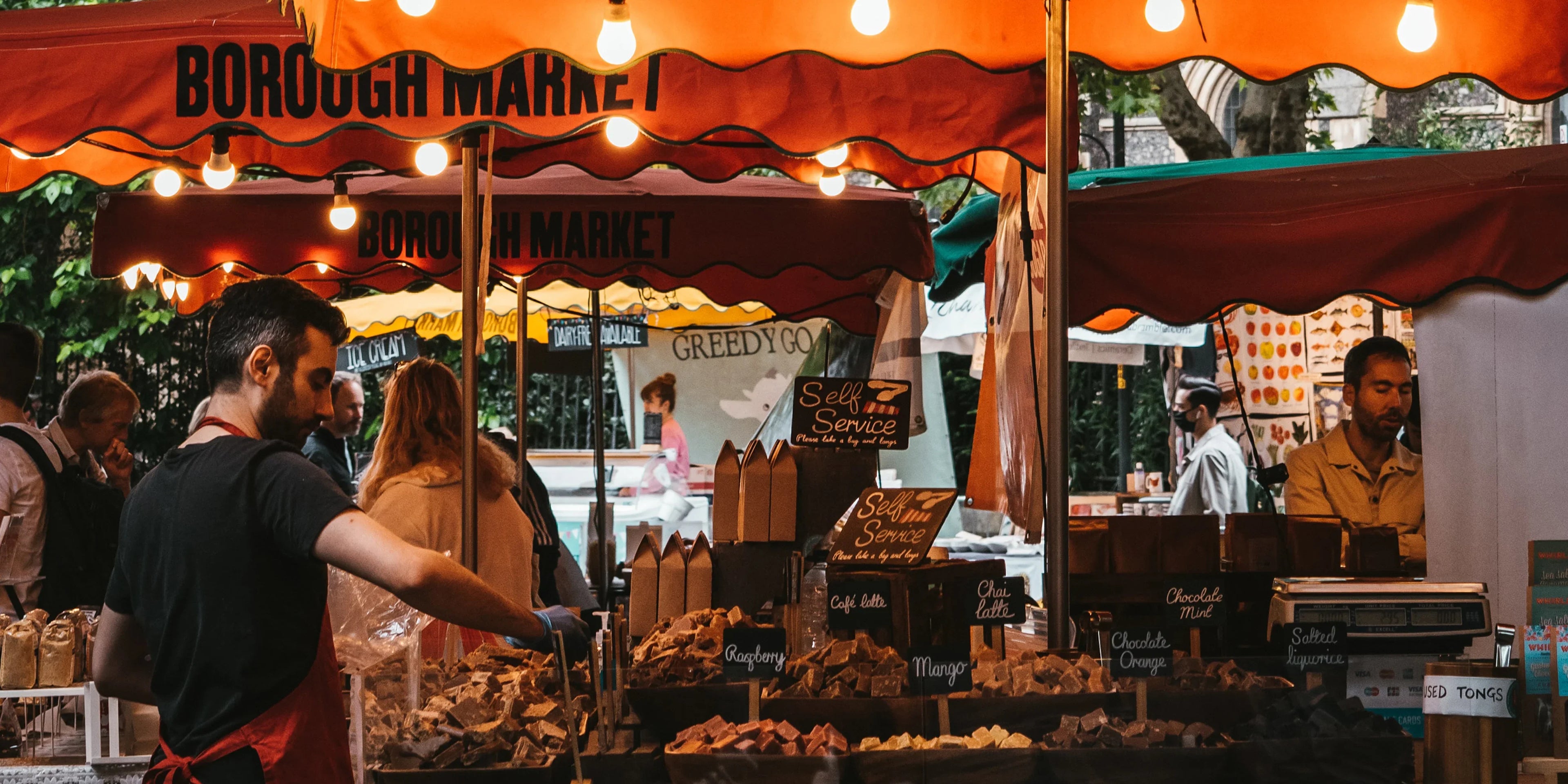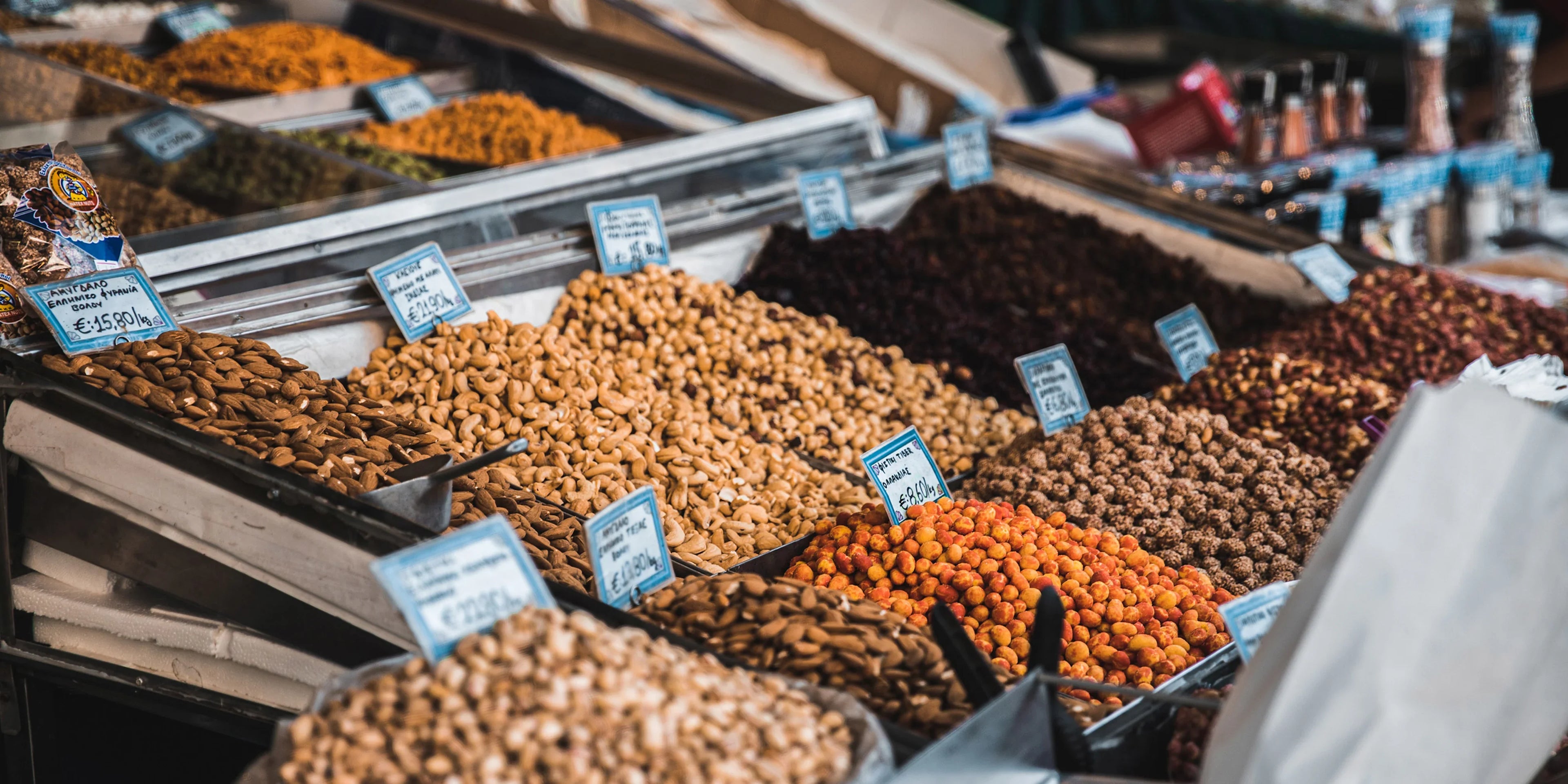The Mediterranean way of living often brings to mind sun-drenched islands, colourful market stalls filled with the aroma of spices, and glistening olive oil poured over bread, washed down with local, natural wine. However there are so many dishes and ingredients that are uniquely Mediterranean: Regional delicacies come from the 21 vastly different countries located along the Mediterranean basin, which includes Spain, Syria, Italy, Greece, Israel, Egypt, and Turkey, among others.

Mediterranean food is made for sharing
The Mediterranean diet is as much a lifestyle as it is about nourishment: encompassing a variety of cultures that celebrate social connection over food and wine. Even when visiting the Mediterranean isn’t an option, you can always recreate a Mediterannean holiday by preparing and enjoying some vibrant, tasty delicatessen from the comfort of your own home.
Cantabrian anchovies
These salty little fish are special because they come from the Bay of Biscay in Cantabria, in the north of Spain, via a one-hundred-year-old artisan method of preparing and tinning sustainable anchovies by hand. They’re bigger, fleshier and of higher quality than standard anchovies. You can find these and other specialities at the Borough Market food hall in Southwark, London – one of the largest and oldest food markets in the city.

Valencia almonds
Hailing from the port city of Valencia on Spain’s southeastern coast, these round, plump almonds have Arabic origins, featuring in nut-based sweets such as halvah and marzipan. Also called Marcona almonds, they are shorter, softer, and sweeter than most almond varieties, and in typical Valencian culture they need little embellishment: Spaniards roast them in extra virgin olive oil and sea salt and pair them with olives and a glass of Mourvèdre, a rich, fruit-driven red wine that comes from the area. Spruce up your own Valencia almonds with this smoked paprika almond recipe from Bon Appetit.
Truffle powder
Truffles, the extremely rare and delicious form of mushroom used in haute cuisine, are cultivated and harvested from wild areas in Italy, France, and Croatia, among other countries. They are a rich and strange ingredient with an intense, earthy, hazelnut-like taste. French gastronome Jean Anthelme Brillat-Savarin referred to them as ‘the diamond of the kitchen’. Although white truffles are rarer and more expensive than black, both are specific to season, with the peak being in autumn and winter. Try shaved truffles atop contemporary European shared plates at Hinterland Deli and Wine Bistro in the Berlin district of Kreuzberg.
Spigarello
This tender, leafy green is native to southern Italy, specifically Naples. It belongs to the broccoli family, with wavy edible leaves and thin fibrous stems; similar to tender stem broccoli. The flavour of Spigarello is mild and slightly sweet; it does not have the bitterness of kale or cavolo nero. Its texture is tender and crunchy – so try blanching it in boiling water and then sauteeing in a pan with citrus, garlic, olive oil, chilli flakes, and salt and pepper. A fantastic side dish to grilled seafood or meat, creamy polenta, and charred cherry tomatoes.
Finochietta
This traditional, coarsely ground salami is from the heart of Tuscany. Grand in flavour, it is a specific type of salami made from high-quality pork and seasoned with fennel seeds and fennel pollen. This adds another level of depth and flavour to Finochietta that is distinctly aromatic. Serve it thinly sliced as an appetizer alongside cornichons as a lovely start to any meal. You can buy it from the cured meat market stalls at the artisanal Markthalle Neun, Berlin’s historical market hall from the 19th century.
